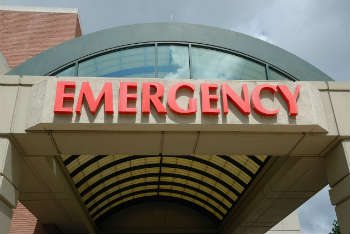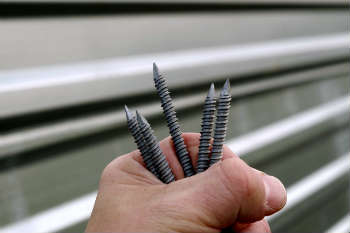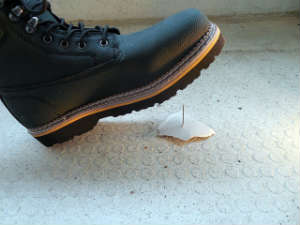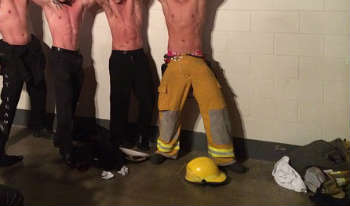Nail guns entered the construction world in the 1950s, and this opened the door for homeowners to also purchase high powered nail guns for their personal use. The average nail gun can travel at about 1,400 feet per second. To put this into perspective, skin can be penetrated at a mere 150 feet per second and bone can be penetrated at 195 feet per second. If that isn’t perspective enough, the average bullet travels at 2,500 feet per second. To legally have a gun, an individual must have a license, but anyone can purchase a high-powered nail gun. This opens the field up for extensive injuries.
Homeowner’s Unattended Nailgun Injures Child
One such injury occurred when a 3-year-old boy was hospitalized after an incident with a nail gun in his home. The boy was toddling around his home where his parents were remodeling their house when he came across an unattended nail gun. These types of injuries account for many of the emergency room visits seen each year. To be exact, there are 37,000 nail gun injuries each year, with 40% of those injuries being homeowner related.
The young boy came in contact with a nail gun and shot himself in the chest. His mother reported that he went to her complaining that his chest hurt.
Although in this accident, the child had no serious outward reaction to the incident, he did shoot himself in the chest, which at the age of 3, can become a deadly situation. Once mother and son were in the emergency room, doctors did a full evaluation of him. They found that his blood pressure and heart rate were within the normal range, but a chest x-ray told a different story. The doctors were surprised to find that he had a 3.81 cm nail between his ribs on the left side. Again, he showed no outward signs of injury, except for the puncture wound in his chest. He was then sent to the trauma unit and prepped for surgery. Doctors knew how life threatening this situation could become.
This young boy began his surgery under local anesthesia, but the doctors quickly realized they could not retrieve the nail. At the mere age of 3, he had to receive a cardiopulmonary bypass, which is used to take over the work of pumping the heart and lungs. His life depended on a machine due to an accident from a nail gun that he easily had access to in his own home. Once completed, he was stitched up and placed in the pediatric intensive care unit. He remained hospitalized for four days before being released.
Emergency Room Visits for Nail Gun Injuries
Doctors and nurses in the emergency room see patients for nail gun injuries that range from minor incidents to serious medical emergencies. Some of these injuries include:
- soft tissue damage–soft tissue of the hand
- bone fracture–bones in the hands, arms, and legs
- ocular damage–caused from ricocheting nails
- tendon or ligament damage–in legs or feet
- nerve damage–nails or shrapnel entering the body
- electrical burns–the gun itself or nails skimming the skin
- lacerations–nails that do not enter the skin directly, but cut skin from an indirect hit
Preventing Injuries
Although the CDC has recommended that contractors go through training provided by OSHA and NIOSH, homeowners are not given this information unless they search for it. A homeowner is permitted to walk into any local hardware store and purchase a rapid firing nail gun of their choice. Lowe’s recommends, “follow the nailer manufacturer’s instructions for use”. Which is asking an inexperienced homeowner to read the extensive fine print of their nail gun prior to use. There is nothing requiring a consumer to be thoroughly trained in how to properly use a nail gun. In this case, a child had no idea about how to properly handle a nail gun. How could he?
Nail guns are effective for the workplace when workmen are properly trained. They are a dangerous weapon in the hands of untrained homeowners or a child for that matter. Firing at speeds close to a handgun, these nail guns are becoming more and more dangerous in homes all over the United States.





